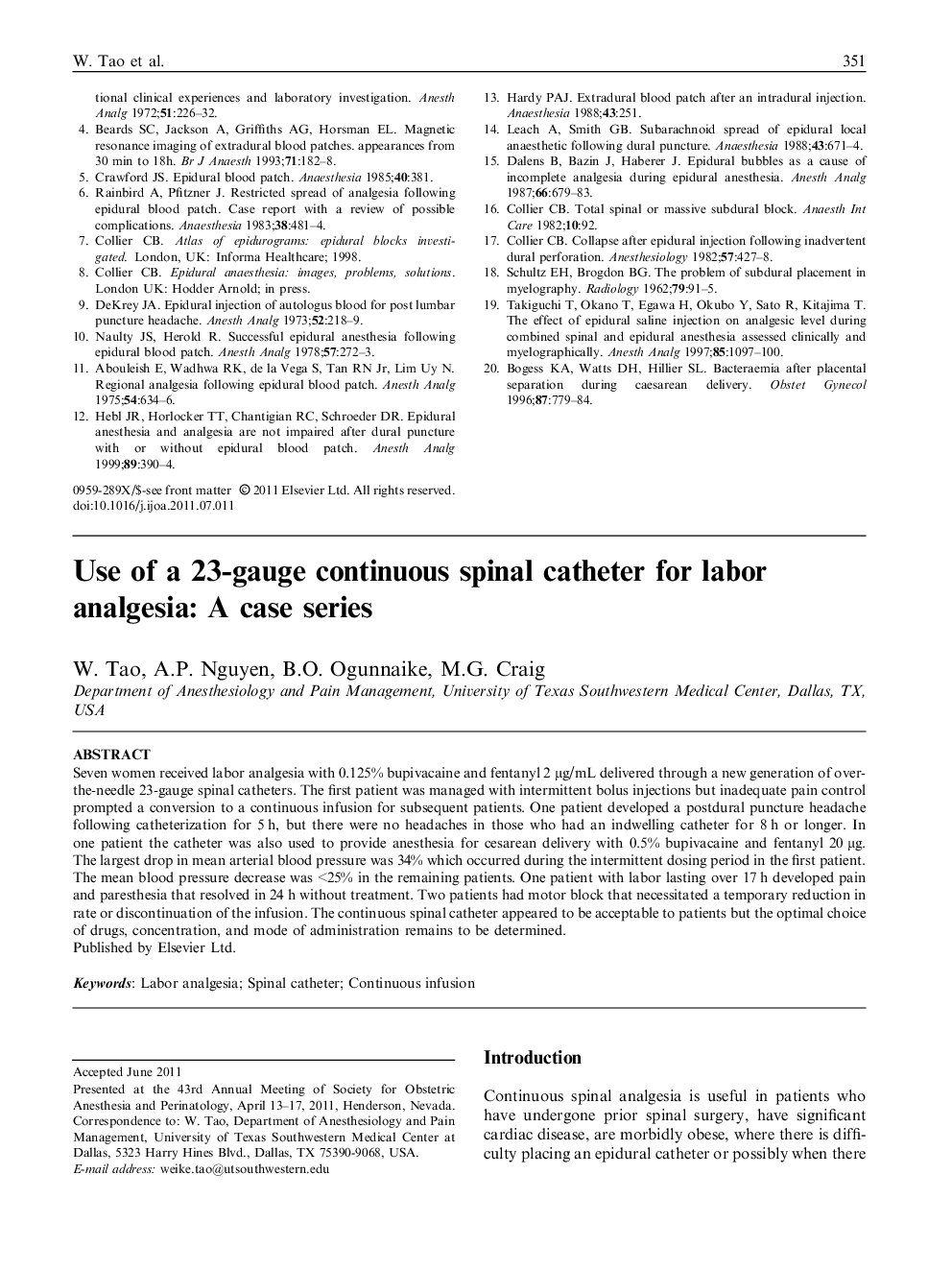| Article ID | Journal | Published Year | Pages | File Type |
|---|---|---|---|---|
| 2757669 | International Journal of Obstetric Anesthesia | 2011 | 4 Pages |
Seven women received labor analgesia with 0.125% bupivacaine and fentanyl 2 μg/mL delivered through a new generation of over-the-needle 23-gauge spinal catheters. The first patient was managed with intermittent bolus injections but inadequate pain control prompted a conversion to a continuous infusion for subsequent patients. One patient developed a postdural puncture headache following catheterization for 5 h, but there were no headaches in those who had an indwelling catheter for 8 h or longer. In one patient the catheter was also used to provide anesthesia for cesarean delivery with 0.5% bupivacaine and fentanyl 20 μg. The largest drop in mean arterial blood pressure was 34% which occurred during the intermittent dosing period in the first patient. The mean blood pressure decrease was <25% in the remaining patients. One patient with labor lasting over 17 h developed pain and paresthesia that resolved in 24 h without treatment. Two patients had motor block that necessitated a temporary reduction in rate or discontinuation of the infusion. The continuous spinal catheter appeared to be acceptable to patients but the optimal choice of drugs, concentration, and mode of administration remains to be determined.
